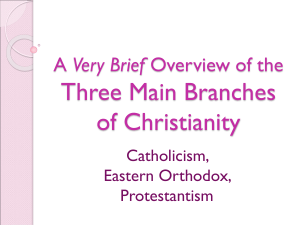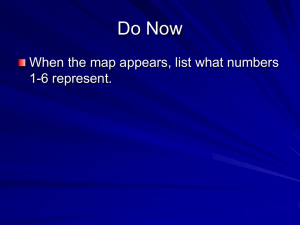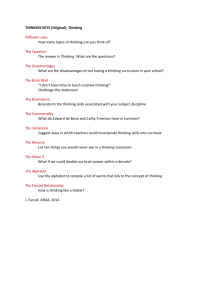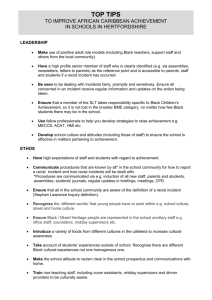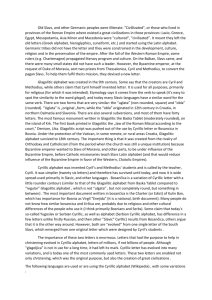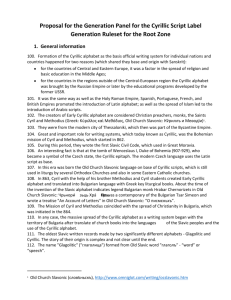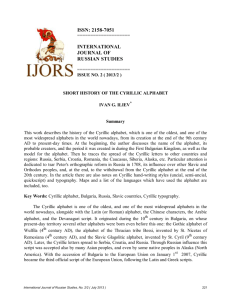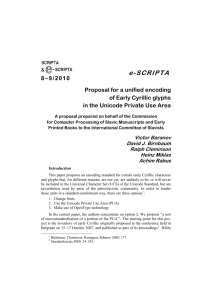EUROPE It has 38 countries (more than any other region of the
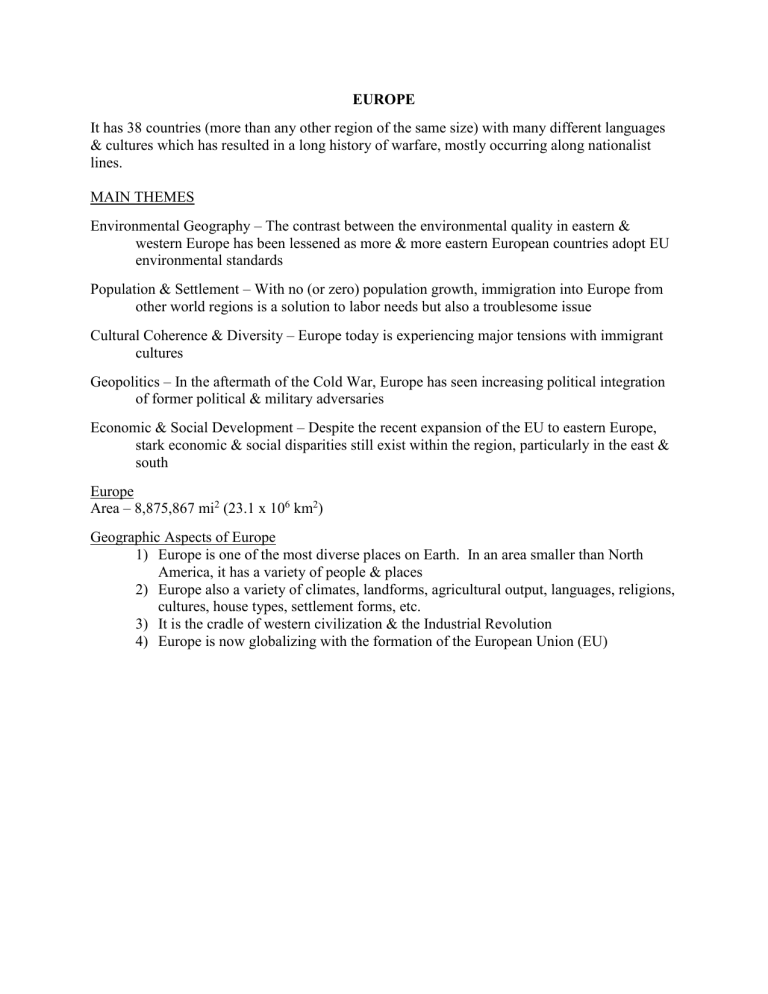
EUROPE
It has 38 countries (more than any other region of the same size) with many different languages
& cultures which has resulted in a long history of warfare, mostly occurring along nationalist lines.
MAIN THEMES
Environmental Geography – The contrast between the environmental quality in eastern & western Europe has been lessened as more & more eastern European countries adopt EU environmental standards
Population & Settlement – With no (or zero) population growth, immigration into Europe from other world regions is a solution to labor needs but also a troublesome issue
Cultural Coherence & Diversity – Europe today is experiencing major tensions with immigrant cultures
Geopolitics – In the aftermath of the Cold War, Europe has seen increasing political integration of former political & military adversaries
Economic & Social Development – Despite the recent expansion of the EU to eastern Europe, stark economic & social disparities still exist within the region, particularly in the east & south
Europe
Area – 8,875,867 mi
2
(23.1 x 10
6
km
2
)
Geographic Aspects of Europe
1) Europe is one of the most diverse places on Earth. In an area smaller than North
America, it has a variety of people & places
2) Europe also a variety of climates, landforms, agricultural output, languages, religions, cultures, house types, settlement forms, etc.
3) It is the cradle of western civilization & the Industrial Revolution
4) Europe is now globalizing with the formation of the European Union (EU)
PHYSICAL GEOGRAPHY
Europe is technically a peninsular of Asia but historically has always been considered a continent. Hence, Eurasia is a better term.
1) European Lowland (aka North European Plain): extends from SW France to Poland plus SE England
2) Alpine Mt. System: E-W series of mts. From the Atlantic Ocean to the Black Sea a.
Pyrenees: between Spain & France b.
Alps: from France to Austria c.
Apennines: south of the Alps; the “spine” of Italy d.
Carpathians: eastern edge of the Alpine system from eastern Austria to
Romania & Yugoslavia
3) Central Uplands: between the Alps & the Lowland from France to the Czech
Republic
4) Western Highlands: from Portugal to Finland plus part of the British Isles
CLIMATE
Europe has three principal climates:
1) along the Atlantic coast there is a moderate & moist maritime climate
2) inland the climate is continental with hotter summers & colder winters
3) along southern Europe is found a dry-summer Mediterranean climate
Europe is greatly influenced by water.
1) on the west is the Atlantic Ocean
2) in the north, the Baltic Sea separates Scandinavia from north-central Europe
3) the English Channel & the North Sea separate the British Isles from continental
Europe
4) Mediterranean Sea separates southern Europe from north Africa
Europe also has numerous navigable rivers which are connected by canals & locks.
ENVIRONMENTAL GEOGRAPHY
1)
Despite it’s small size, Europe has great environmental diversity due to its a) complex geology b) latitudinal extent from the arctic to the Mediterranean subtropics c) modification by water bodies d) human-changed landscape
2) As a result of its agriculture, resource extraction (ex: coal), industrial manufacturing & urbanization, it has suffered from air & water pollution and acid rain
3) Beginning in the 1970s, the EU has addressed these environmental problems
4) Under communism, Eastern Europe neglected its environment & solving these problems is still complicated as a result of continuing economic & political evolution
POPULATION & SETTLEMENT
Half a billion people live in Europe with the highest densities in England, the Netherlands, northern France, northern Italy & western Germany. Most of Europe is at Stage IV in demographic transition with the CBR < the CDR. Immigration offsets this low or negative NIR.
Europe is highly urbanized; most countries are > 50% urban while some (UK & Belgium are >
90%)
Migration
1) Guest Workers (ex: immigrants from Turkey to Germany)
2) Immigrants from former European colonies in Asia (India, Pakistan, Hong Kong,
Indonesia), Africa (northern & Sub-Saharan Africa) & the Caribbean (Jamaica) going to
England, France & the Netherlands
3) East Germany into West Germany
4) Schengen Agreement: allows citizens of EU members to travel within member states without a passport
European City Eras
1) Medieval (900-1500) – narrow winding streets, 3- & 4-story buildings, little setbacks, few open spaces, small cramped rooms, no modern plumbing nor heating: inhabited by low income residents, elderly, university students & ethnic migrants
2) Renaissance-Baroque (1500-1800) – open & spacious, wide boulevards, squares, monuments, ceremonial buildings, elaborate residences, ornamental gardens: for the new urban elite (royalty, aristocrats, successful merchants)
3) Industrial (1800-Present) – industrial districts located outside the city walls
CULTURAL COHERENCE & DIVERSITY
Europe has a wide variety of languages, customs, religions, ways of life, & landscapes. These have resulted in strong local & regional identities &, in turn, both separatism & nationalism.
European cultures have played major roles in globalism through colonialism & imperialism. It’s languages, religions, economies, & values have transformed the globe (ex: cricket games in
Pakistan, high tea in India, Dutch architecture in South Africa, millions of French-speakers in equatorial Africa).
Language
- plays an important role in nationalism & group identity in Europe
Major Language Subfamilies (aka Branches) – 90% speak a language of one of the 3 subfamilies
Germanic (200 million)
German (~90 million): Germany, Austria, Liechtenstein, Luxembourg, eastern
Switzerland, areas in Alpine Italy
English (~60 million)
Dutch & Flemish (20 million)
Danish, Norwegian & Swedish (20 million)
Romance (200 million)
Italian (~60 million): Italy, Switzerland, Corsica
French (~55 million): France, western Switzerland, southern Belgium
Spanish (~25 million) Portuguese (12 million): Portugal, NW Spain
Romanian (24 million)
Slavic (80 million): excluding Russia, Belarus & the Ukraine
Polish (35 million): Latin alphabet due to strong Catholic heritage
Czech (~14 million): Latin alphabet due to strong Catholic heritage
Slovakian (~14 million): Cyrillic alphabet due to strong Orthodox heritage
Serbo-Croatian (14 million) : Cyrillic alphabet due to strong Orthodox heritage
Bulgarian-Macedonian (11 million) : Cyrillic alphabet due to strong Orthodox heritage
Slovenian (2 million): Cyrillic alphabet due to strong Orthodox heritage
Minor Indo-European Languages
Celtic (1 million +)
Greek (10 million)
Lettish & Lithuanian (4 million total)
Non-Indo-European Languages – spoken by only 5% of Europeans
Magyar (13 million): Hungary, parts of Romania, Slovakia, & northern Serbia-
Montenegro
Estonian & Lapp & Finnish (5 million total)
Turkish: in parts of Bulgaria (~790 thousand) & by the immigrants in Germany
(2.5 million)
Basque (600 thousand): western border between France & Spain
Religion
Protestant (100 million) – northern Europe
Catholic (250 million) – southern & east-central Europe, & Ireland
Orthodox – south-eastern Europe
Islam (12.5 million) – France (7.5 million), Germany (3.9 million), Albania & parts of the Balkans
Jews (< 2 million): until 1890s, 90% of world’s Jews lived in Europe, in 1939, 60% of world’s Jews


